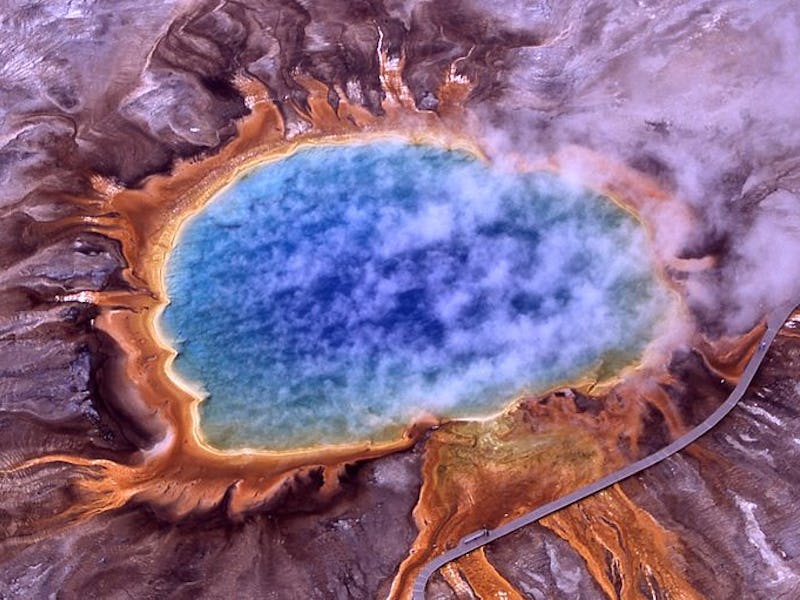Ancestor of All Cellular Life on Earth Appeared Way Earlier Than We Thought
"Fossils can only tell us so much."

About 4.5 billion years ago, a proto-planet named Theia crashed into Earth, birthing our moon. A relatively short time later, a monumental birth of another sort took place. According to a paper released Monday in Nature Ecology & Evolution, the still-unidentified microbe that scientists believe is the ancestor to all cellular life on Earth was born sometime before 3.9 billion years ago. As it turns out, the last universal common ancestor — LUCA for short — emerged even earlier than scientists once believed.
Scientists previously pegged the LUCA’s birth to a period 3.5 to 3.8 billion years ago, but the new evidence examined in the study suggests it happened one hundred million years earlier. The researchers from the Universities of Bristol and Bath determined the LUCA’s new age using the concept of the “molecular clock,” which does away with all of the issues with relying on fossils to build Earth’s early-life timeline. With early life fossils, there are always older ones waiting to be exposed, which may seem exciting but makes creating an early-life timeline very difficult. The molecular clock, in contrast, uses differences in the genomes of individual species to tell how much time has passed since they shared a common ancestor. The basic idea is that the more mutations two species share, the more time has passed since their evolutionary paths diverged.
The team applied a variant of this approach to some of the oldest existing fossils ever found, hoping they’d reveal when LUCA was born. “We used a relaxed clock framework, which means that the branches across the [evolutionary] tree can have differing rates of evolution,” explains first author and University of Bristol Ph.D. candidate Holly Betts to Inverse. Because the differences in age that the molecular clock technique gives are relative, she explains, “you then use fossil calibrations to anchor the tree in real time.”
The ARMAN are a group of archaea found in acid mine drainage.
Betts and her team used a conservative approach, in which they only used fossils that could be dated with confidence, varied the parameters of the clock model, and integrated all the results. This, she says, means “that though our results are not necessarily precise, they should be accurate.” All in all, the team examined 29 genes from a total of 102 living organisms representing bacteria, archaea, and eukaryotes (multicellular organisms that include animals, plants, and fungi). Then they used nine fossils to anchor the tree, including microfossils found in Australia’s Strelly Pool formation that are dated to about 3.4 billion years old, making them the oldest confirmed fossils.
Using the tree, the scientists determined that bacteria and archaea emerged about one billion years after LUCA, whereas eukaryotes emerged about 1.8 billion years after it. The finding about the eukaryotes is consistent with previous studies and reconfirms that the human lineage is not one of the primary lineages of life. Previously popular theories held that life dribbled down from three domains — eukaryotes, bacteria, and archaea — but now it appears that eukaryotes came later than the original branches of life.
“Instead, the eukaryotes arose from within the archaea and were formed via an endosymbiosis event between an archaeal cell and a bacterial cell,” says Betts. “So the main hypothesis now has two major lineages of life — the bacteria and the archaea, with the eukaryotes diverging as a lineage within.”
A timeline of life, based off this study.
What all of this implied, study co-author and University of Bristol professor of phylogenomics Davide Pisani, Ph.D. tells Inverse, was that the bacteria and the archaea descended from LUCA — and so it was possible to use those two lineages to figure out how old LUCA is. By further applying the molecular clock method, they estimated it was born about 3.9 billion years ago.
Pisani says that he hopes this study is just one of the first of many to combine fossil and genetic data more frequently “not only to establish timescales but to understand evolution more broadly.” Betts concurs, emphasizing that the search for early life needs to take an integrative approach.
“Fossils can only tell us so much, especially when there are so few around in Earth’s early stages,” says Betts. “No fossil can ever tell us to the true age of a clade because the clade must have existed already for the fossil to have been formed. This is partly why the molecular clock is so useful as we can use it to look at the time prior to the fossil, when the lineages actually appeared.”